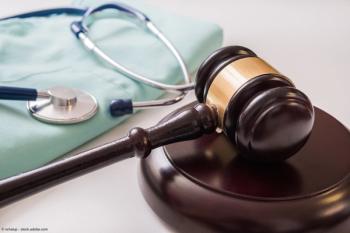
- Vol 50 No 06
- Volume 50
- Issue 06
The role of mediation in medical malpractice litigation
This process is one of the most common methods of resolving medical negligence cases.
It is commonly known that most medical negligence cases are resolved through a mutually agreed settlement rather than through a jury verdict at trial. What may be less well known are the mechanics of how negotiated resolutions are reached. One of most common methods of resolving a medical negligence case is through a mediation. Mediation is a process in which the parties to a lawsuit meet with a mutually selected, or court-appointed, neutral person who assists the parties with negotiating the settlement of the case. This column will explain the role of mediation in medical malpractice litigation and explain why mediation is particularly useful in the context of this type of dispute.
In recent decades, as litigation costs continue to rise at ever-increasing rates, parties have sought less-expensive alternatives to traditional litigation. One of the most popular alternative dispute resolution methods is the use of mediation. The cost and time involved in conducting a mediation is far less than that of a traditional trial. Many states have enacted laws to support the use of the mediation process. In general, these laws recognize mediators as a distinct type of legal service provider and ensure statements made during a mediation are privileged and cannot be used at trial if the mediation is unsuccessful. Moreover, many courts throughout the country at the state and federal level now require parties participate in a good-faith effort to mediate their dispute before the case can proceed to a trial.
Although each mediation is different, and different mediators employ their own methods of bringing the parties to a mutually agreeable resolution, the typical structure of a mediation is that both parties will begin in a joint conference with the mediator. The mediator will then explain the purpose of the mediation to the parties and set the ground rules for how the mediation will proceed. These rules generally involve acting in good faith and attempting to consider the arguments and position of the opposing side. Sometimes the mediator will allow each side to make a brief statement during this general session, outlining what that party sees as the strengths of its case or the weaknesses in the opposing party’s position. After this joint session, the mediation typically breaks into private caucuses where each party speaks to the mediator separately. At this point, the mediator is in the role of conducting “shuttle diplomacy” in which messages are relayed between the different parties. The benefit of this approach is that the mediator can gauge what type of messaging will be most effective to bring the parties together. After multiple rounds of settlement offers, the mediator can typically determine whether a resolution is likely and what amount will be needed to settle the case or what additional messages must be conveyed to bring the case to a resolution.
The other benefit of a mediation in the medical malpractice context is that the parties are given an opportunity to communicate directly in a way not typically allowed during the litigation process. Once a lawsuit is filed, the attorneys representing the patient/plaintiff and the health care provider/defendant will make it clear to their clients that they should not communicate with anyone else about the case. It is generally advisable for parties to allow all their communications to flow through their attorney, as a misstatement could be used during trial to swing the case. However, in the context of a mediation, parties can communicate directly in a way that is not otherwise possible.
In a recent case involving an unusual injury to a patient from an unforeseen circumstance, the family of the patient and the care provider were staunchly dug into their positions on the case. However, the patient’s family ultimately decided to settle the case after learning that the way their loved one had suffered an injury had led the defendant health care entity to retrain its staff and modify internal policies. To this family, the monetary amount of the settlement was less important than closure made possible by learning that steps were taken to prevent a similar accident in the future. This type of nonmonetary consideration is something that is not otherwise obtainable through a lawsuit and is a defining positive of the use of mediation.
When a case proceeds through a trial, it is ultimately a judge and jury who determine the outcome of a case. In a mediation, the parties are given the opportunity to exercise control over how their case is decided. However, much like a trial, mediation presents an opportunity for parties to present their side of the dispute and be heard by a neutral party. Although mediation is not a panacea that can cure every aliment of the current medical malpractice litigation landscape, it is a useful tool for resolving difficult cases that would otherwise be left to a jury to decide.
Articles in this issue
over 3 years ago
How do you bill for a 75-minute audio-only E/M visit?over 3 years ago
Telemedicine’s uncertain future in urologyover 3 years ago
Part D data reveal how urologists are prescribing antibioticsover 3 years ago
Same-side shock wave lithotripsy, URS present coding questionsover 3 years ago
What to consider when weighing pre-tax, Roth IRAsalmost 4 years ago
Urology Times 50 Innovations Series: Clean intermittent catheterizationabout 4 years ago
Dr. Amarasekera on supporting sexual minorities in healthcareNewsletter
Stay current with the latest urology news and practice-changing insights — sign up now for the essential updates every urologist needs.



















